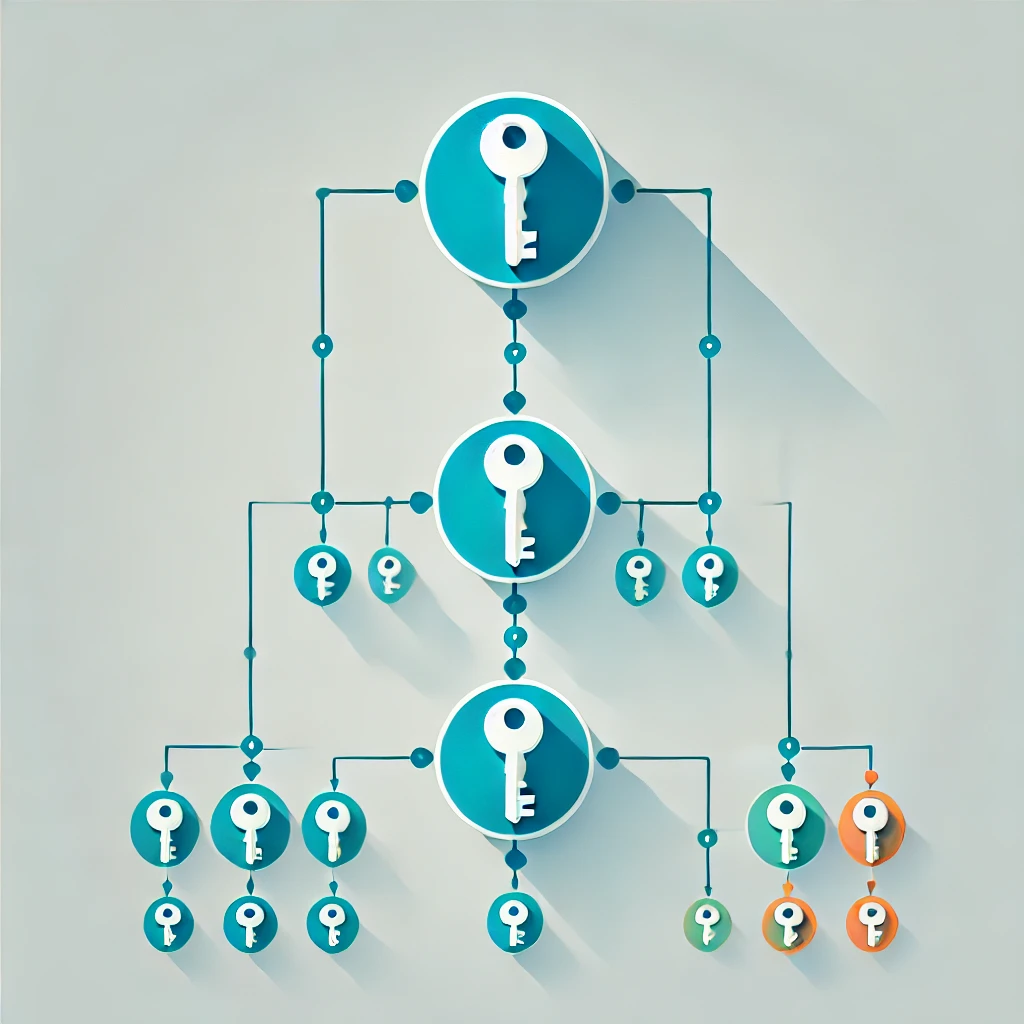FOKS: Federated Open Key Service

How Does It Work?
A Simple Key Hierarchy
To power applications like the Git and KV-Store shown above, FOKS needs a shared symmetric key for all readers and writers of the data, available only to the authorized devices, teams users and keys that the authors specify. FOKS achieves this natural application requirement with a simple key hierarchy.
Everything starts with base-level keys, like user device keys, backup keys, or YubiKeys. Device keys are generated on user devices and never leave the machine they are generated on. They are protected locally with system-specific encrypted stores where possible, and passwords where not. Other base-level keys include backup keys (for which a human-readable code is the seed), or YubiKeys.
Every user of the system has a sequence of per-user-keys (PUKs) at the next level up the hierarchy. The secrets seeds for these keys are encrypted for all available base-level keys. A PUK rotates whenever a base-level key is removed.
At the next level up there are teams, which work much like users. All members of the teams share per-team-keys (PTKs), which are encrypted for the team's members, be they users (via PUKs) or teams (via recursive PTKs).

Signature Chains
In FOKS, there are two types of parties: users and teams. In both cases, there is a rotating list of constituents (be they devices or team members), and as these constituents change, so to does the corresponding active PUK or PTK. As such users and teams share much protocol design and implementation mechanism.
In both cases, the set of keys that can sign on behalf of the party changes over time, and it's crucial for security that there is a careful accounting of these keys that resists tampering by the FOKS server.
To prevent tampering, FOKS uses "signatures chains", a linear chain of signatures that can be played back to verify the ordering of signatures, and that each signature was performed with a key that was valid at the time of signing.

Merkle Trees
When different parties or computers access keys for a party, they do so via signature chains; they grab these chains from the server and play them back to discover the current set of keys that represent a party.
A compromised server can still cheat here by forking chains, or by withholding updates. A Merkle Tree is deployed on each federated host to hold it accountable to one consistent view of the world. Each signature link is immutably stored in the tree, preventing various forms of "vacilation."
FOKS further introduces a novel technique to hide updates from outside observers with only simple cryptography (and without VRFs).

Boring Hardened PQ Crypto
FOKS makes an effort to use the simplest, most boring, most hardened possible crypto. It makes extensive use of Go's standard implementation of the NaCl library. Whenever Diffie-Helman over Curve25519 is used, it's combined with the NIST-standardized ML-KEM algorithm to give post-quantum security.
We've made an effort to avoid fancier crypto like VRFs, SNARKs, STARKs, etc., in favor of simple primitives wherever possible. For instance, it might seem Neanderthal to use simple hashes instead of VRFs to hide positions of items on our Merkle Tree. But do you know of any good PQ-secure VRFs?

What's Your Reaction?
 Like
0
Like
0
 Dislike
0
Dislike
0
 Love
0
Love
0
 Funny
0
Funny
0
 Angry
0
Angry
0
 Sad
0
Sad
0
 Wow
0
Wow
0









































